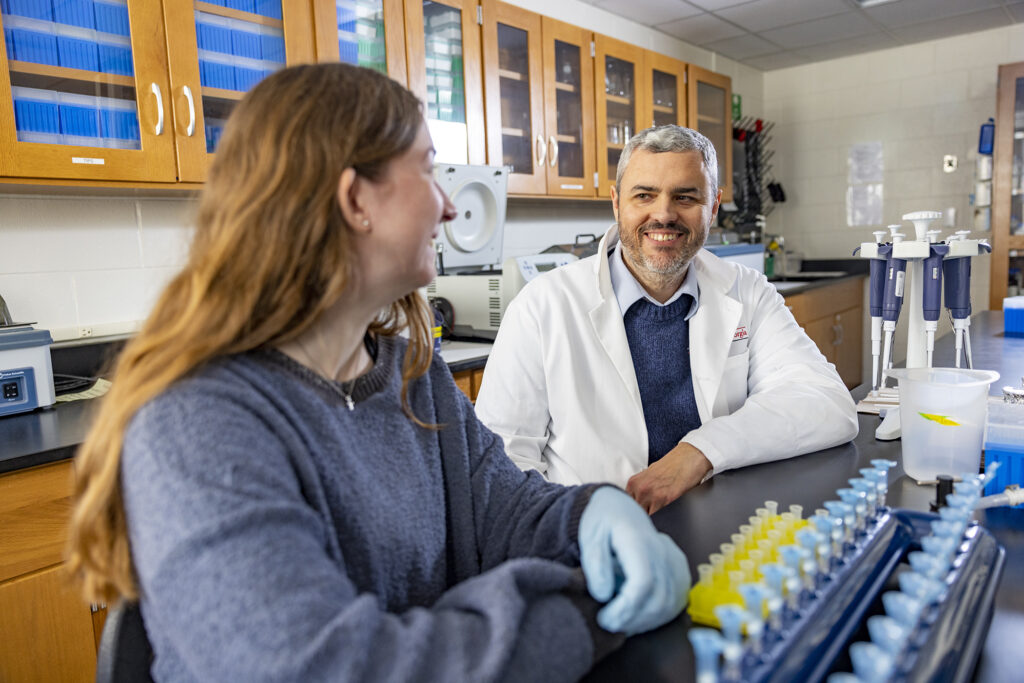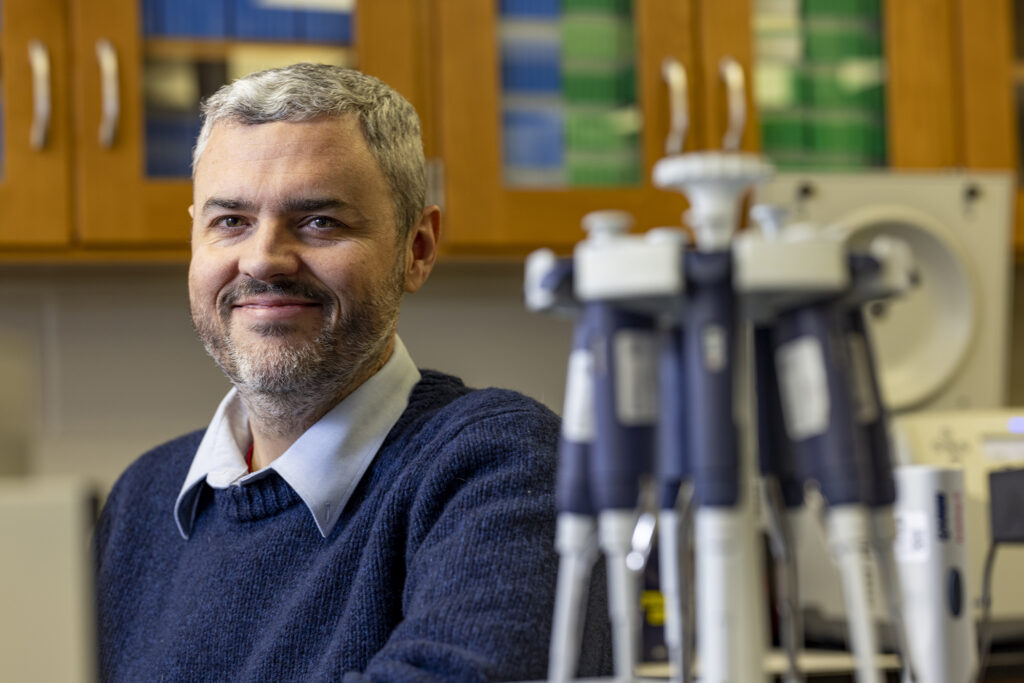When Brian Shamblin started his undergraduate career as a plant biology major, he never could have predicted his future career path in wildlife conservation genetics.
So how did the shift happen? “Completely by accident,” Shamblin said.
Growing up on his grandparents’ hobby farm, Shamblin tended to an array of bird species including pheasants, rheas and doves. The early experiences on this farm would serve as a prelude to a career that would eventually intertwine with creatures far beyond the farm’s boundaries.
His intrigue for genetics was kindled while keeping and raising ornamental chickens, where selective breeding practices and making decisions about which individuals to breed, offered a glimpse into the potential of genetic studies.
“What do I want to do as a hobby versus what I want to do for a career? I’m a slow learner, so it took me a while to realize that if I apply genetic and genomic tools, I can work on so many types of questions and taxa—birds, reptiles and plants. Now fish as well because we’re adding imperiled and invasive fish genetics to the mix,” Shamblin said.
Now, Shamblin is an associate research scientist at the Warnell School of Forestry and Natural Resources. His research focuses on the application of genetic tools to inform management and conservation decisions, most notably with sea turtles, using nest samples to identify nesting females and address knowledge gaps in their life history.

Brian Shamblin works with undergraduate student Kira Davis in his lab. (Photo by Dorothy Kozlowski/UGA)
When Shamblin was asked how his work moved from studying birds to sea turtles, his answer was “That’s another thing that happened completely by accident.”
“Sea turtles are so hard to directly study because they spend most of their lives in the ocean. We get information by sampling nests at a spatial scale that would be impossible if we had to interact with all of the nesting turtles directly.
“It all started with a technician, Joceyln Coulter, working with the Little Cumberland Sea Turtle Project. At that time, this project was still tagging the nesting females at night and collecting small skin samples for genetics. Jocelyn froze some of these eggshells and asked if we could use them to identify the mother. I told her, ‘Don’t hold your breath, because I looked into the literature and found nothing using reptile nuclear DNA to identify individuals,’” Shamblin said.
So, Shamblin got to work identifying genetic markers and optimizing the process of extracting the mother turtle’s DNA from eggshells.
“I played with it for probably a month before I said, ‘Okay. I’m just going to take a chance on this and see what happens.’ It worked, and it did match one of their physically tagged females,” he said.
The development of this genetic tagging technique has evolved into a long-term project that has opened the door for scientists to seek answers to previously intractable questions. Among these are how close females are returning to their birthplace when they start nesting and how does their nesting behavior change over time? The hope is that these nesting histories will ultimately inform how old these females are when they start nesting and how many years they are capable of nesting. There are also plans to gather information about the elusive male sea turtles by sampling dead embryos and hatchlings left behind in the nest.
Despite working with a species adored by many, Shamblin’s favorite part of his job is interacting with people.
“We couldn’t do a project like this without the beach cooperators and buy-in from the state agencies. The sea turtle monitoring networks are mostly made up of community scientists that are volunteering their time. It’s truly a team effort,” he said.
